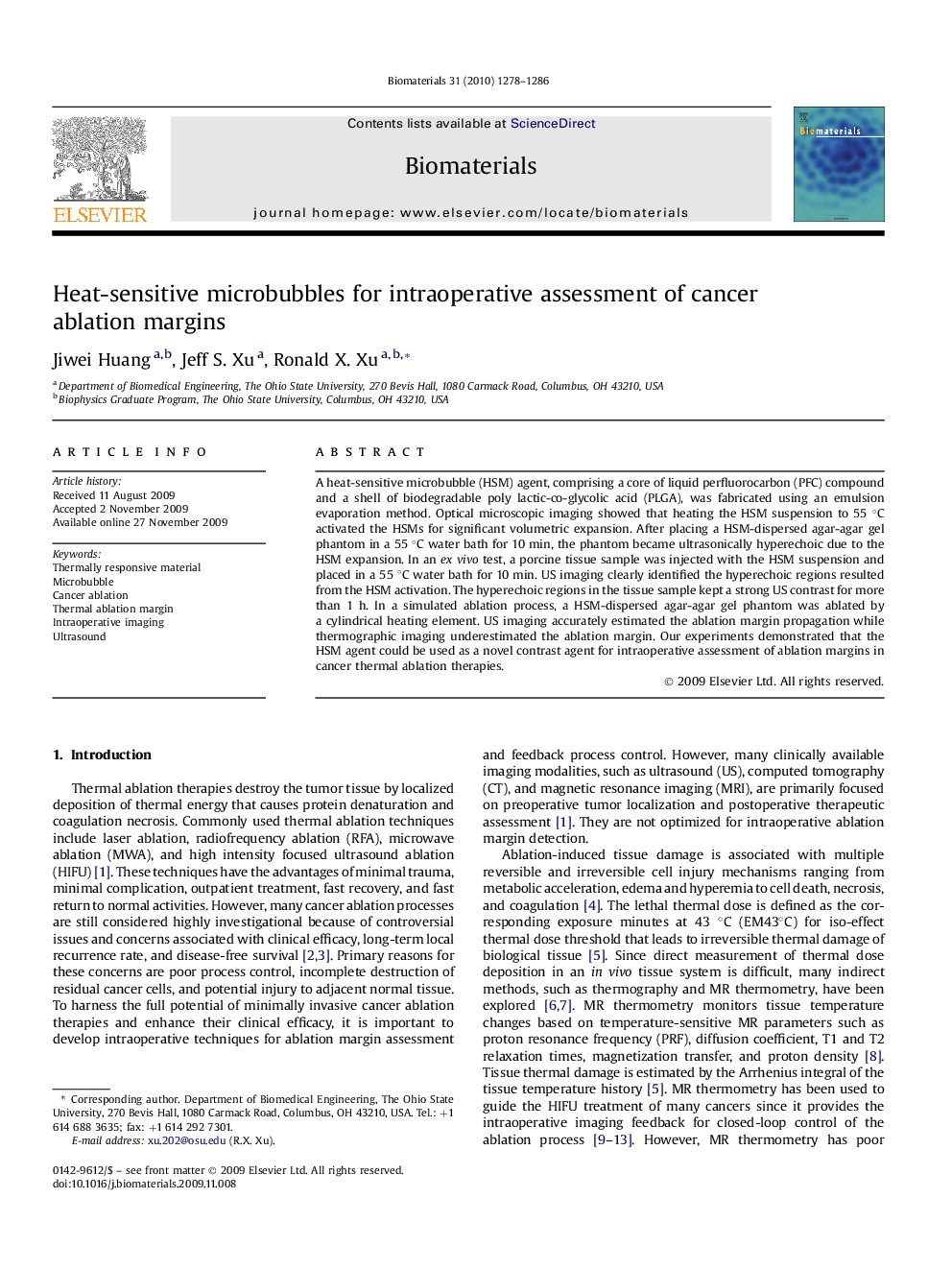| Article ID | Journal | Published Year | Pages | File Type |
|---|---|---|---|---|
| 9832 | Biomaterials | 2010 | 9 Pages |
A heat-sensitive microbubble (HSM) agent, comprising a core of liquid perfluorocarbon (PFC) compound and a shell of biodegradable poly lactic-co-glycolic acid (PLGA), was fabricated using an emulsion evaporation method. Optical microscopic imaging showed that heating the HSM suspension to 55 °C activated the HSMs for significant volumetric expansion. After placing a HSM-dispersed agar-agar gel phantom in a 55 °C water bath for 10 min, the phantom became ultrasonically hyperechoic due to the HSM expansion. In an ex vivo test, a porcine tissue sample was injected with the HSM suspension and placed in a 55 °C water bath for 10 min. US imaging clearly identified the hyperechoic regions resulted from the HSM activation. The hyperechoic regions in the tissue sample kept a strong US contrast for more than 1 h. In a simulated ablation process, a HSM-dispersed agar-agar gel phantom was ablated by a cylindrical heating element. US imaging accurately estimated the ablation margin propagation while thermographic imaging underestimated the ablation margin. Our experiments demonstrated that the HSM agent could be used as a novel contrast agent for intraoperative assessment of ablation margins in cancer thermal ablation therapies.
